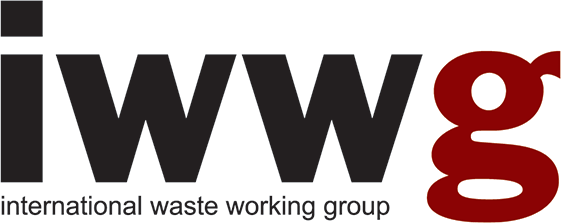PRELIMINARY DEVELOPMENT OF A COMPOSITE INDICATOR OF CIRCULARITY IN THE CONSTRUCTION AND DEMOLITION WASTE (CDW) SECTOR
- Carmen Martínez-García - Department of Chemical, Environmental and Materials Engineering, University of Jaen, Spain
- María Teresa Cotes-Palomino - Department of Chemical, Environmental and Materials Engineering, University of Jaen, Spain
- Ana B. López - Department of Chemical, Environmental and Materials Engineering, University of Jaen, Spain
- Carlos J. Cobo-Ceacero - Department of Chemical, Environmental and Materials Engineering, University of Jaen, Spain
- Ana C. Revelo-Rodríguez - Department of Chemical, Environmental and Materials Engineering, University of Jaen, Spain
- Francisco J. Troyano-Pérez - Department of Chemical, Environmental and Materials Engineering, University of Jaen, Spain
- Francisco J. Iglesias-Godino - Department of Chemical, Environmental and Materials Engineering, University of Jaen, Spain
- Francisco de Asís Torres-Fernández - Department of Chemical, Environmental and Materials Engineering, University of Jaen, Spain
- Alejandro Dubbelman-Vizcaíno - Department of Chemical, Environmental and Materials Engineering, University of Jaen, Spain
- Available online in Detritus - Volume 32 - September 2025
- Pages 21-29
Released under CC BY-NC-ND
Copyright: © 2025 CISA Publisher
Abstract
The circular economy is central to promoting sustainability in the construction sector, especially in the management of Construction and Demolition Waste (CDW). This article explores the importance of circularity indicators as key tools to assess and improve practices in this sector, with a particular focus on the proposed Integrated Circularity Index for CDW (ICICDW), which would provide a comprehensive view in the framework of the Circular Economy. In the EU, indicators like energy use, waste management, and recycled content help assess the environmental impact of construction. However, growing waste and emissions, along with a lack of standardised methods, highlight the need for a more holistic approach. This article reviews thirteen EU-proposed indicators for the construction sector, evaluating their relevance to CDW and emphasizing the need for new composite indicators that also consider material use and economic factors. The Integrated Circularity Index for CDW (ICIRCD) is introduced as a tool that combines specific indicators from the CDW sector with economic aspects. This integration allows for a comprehensive assessment of circular economy performance within the CDW sector. This approach seeks to address crucial challenges, thereby driving the transition towards a more sustainable model. The implementation of circular economy indicators brings significant benefits, including improved waste management, reduced environmental impact, optimised resources and costs, promotion of the circular economy and compliance with current regulations. In this context, this paper highlights the fundamental importance of developing indicators that integrate various dimensions in order to move effectively towards sustainability and more environmentally friendly construction.Keywords
Editorial History
- Received: 01 May 2025
- Accepted: 30 Jun 2025
- Available online: 22 Jul 2025
References
Avintia Sostenibilidad. (2021). White paper on sustainability in construction. Avintia. Retrieved from https://www.google.com/search?q=https://www.avintiasystem.com/wp-content/uploads/2021/09/LIBRO-BLANCO-SOSTENIBILIDAD_AVINTIA-BAJA-v2.pdf
Chen, S., Rotaru, A.-E., Shrestha, P.M., Malvankar, N.S., Liu, F., Fan, W., Nevin, K.P., Lovley, D.R., 2014. Promoting interspecies electron transfer with biochar. Sci. Rep. 4, 5019.
DOI 10.1038/srep05019
Conama. (2018). Circular economy indicators in the construction sector. Congreso Nacional del Medio Ambiente (CONAMA). Retrieved from https://www.google.com/search?q=https://www.conama.org/conama/download/files/conama2018/GTS%25202018/6_final.pdf
European Commission. (2019). The European Green Deal [Press release]. Retrieved from https://eur-lex.europa.eu/resource.html?uri=cellar:b828d165-1c22-11ea-8c1f-01aa75ed71a1.0002.02/DOC_1&format=PDF
European Commission. (2023). Revised circular economy indicators. Retrieved from https://www.consilium.europa.eu/es/policies/fit-for-55/
European Commission. (2024a). EU Climate Law: 55% reduction target for 2030. Retrieved from https://www.consilium.europa.eu/es/policies/fit-for-55/
European Commission. (2024b). EU construction and demolition waste management protocol (Revised edition). Publications Office of the European Union. Retrieved from https://ec.europa.eu/docsroom/documents/20509
European Commission. (2024c). A new Circular Economy Action Plan: For a cleaner and more competitive Europe. Retrieved from https://eur-lex.europa.eu/resource.html?uri=cellar:9903b325-6388-11ea-b735-01aa75ed71a1.0017.02/DOC_1&format=PDF
European Commission. (2014). Sustainable Buildings: Communication from the Commission to the European Parliament, the Council and the European Economic and Social Committee (COM/2014/445 final). Retrieved from https://www.google.com/search?q=https://www.cepco.es/Uploads/docs/Sustainable_Buildings_Communication_EC_02072014%255_B1%255D%255FSD_es.pdf
European Parliamentary Research Service. (2021). Circular economy in the construction sector: Building a more sustainable future (Briefing No. PE 690.579). European Parliament. Retrieved from https://www.europarl.europa.eu/RegData/etudes/BRIE/2021/690579/EPRS_BRI(2021)690579_EN.pdf
Franklin-Johnson, E., Figge, F., & Canning, L. (2016). Resource duration as a managerial indicator for circular economy performance. Journal of Cleaner Production, 133, 589-598. Retrieved from
DOI 10.1016/j.jclepro.2016.06.023
Ghisellini, P., Cialani, C., & Ulgiati, S. (2016). A review on circular economy: The expected transition to a balanced interplay of environmental and economic systems. Journal of Cleaner Production, 114, 11-32. Retrieved from
DOI 10.1016/j.jclepro.2015.09.007
Ghisellini, P., Ripa, M., & Ulgiati, S. (2018). Exploring environmental and economic costs and benefits of a circular economy approach to the construction and demolition sector: A literature review. Journal of Cleaner Production, 178, 618-643. Retrieved from
DOI 10.1016/j.jclepro.2017.11.207
Green Building Council Spain (GBCE). (2023). Circular economy indicators in the construction sector. Working Group WG-6 of the National Environmental Congress 2018 Conama Foundation. Retrieved from https://www.google.com/search?q=https://gbce.es/wp-content/uploads/2023/08/informe-indicadores.pdf
IHOBE. (2018). Circular economy indicators in the Basque Autonomous Community 2018. Sociedad Pública de Gestión Ambiental del Gobierno Vasco. Retrieved from https://www.google.com/search?q=https://www.euskadi.eus/contenidos/informacion/economia_circular_pais_vasco_2018/es_def/adjuntos/indicadores_economia_circular_pais_vasco_2018.pdf
Kirchherr, J., Piscicelli, L., Bour, D., Kostense-Smit, E., Muller, J., Hultbrechtse-Truijens, A., & Hekkert, M. (2018). Barriers to the circular economy: Evidence from the European Union (EU). Ecological Economics, 150, 264-272.
DOI 10.1016/j.ecolecon.2018.04.028
Lederer, J., Gassner, A., Keringer, F., Mollay, U., Schremmer, C., & Fellner, J. (2020a). Material Flows and Stocks in the Urban Building Sector: A Case Study from Vienna for the Years 1990-2015. Sustainability, 12(1), 300.
DOI 10.3390/su12010300
Lederer, J., Gassner, A., Kleemann, F., & Fellner, J. (2020b). Potentials for a circular economy of mineral construction materials and demolition waste in urban areas: A case study from Vienna. Resources, Conservation and Recycling, 161, 104942.
DOI 10.1016/j.resconrec.2020.104942
Ma, W., Liu, T., Hao, J. L., Wu, W., & Gu, X. (2023). Towards a circular economy for construction and demolition waste management in China: Critical success factors. Sustainable Chemistry and Pharmacy, 35, 101226. https://www.google.com/search?q=
DOI 10.1016/j.scp.2023.101226
Mayer, A., Haas, W., Wiedenhofer, D., Krausmann, F., Nuss, P., & Blengini, G. A. (2019). Measuring Progress Towards a Circular Economy: A Monitoring Framework for Economy-wide Material Loop Closing in the EU28. Journal of Industrial Ecology, 23(1), 62-76.
DOI 10.1111/jiec.12809
Menegaki, M., & Damigos, D. (2018). A review on current situation and challenges of construction and demolition waste management. Current Opinion in Green and Sustainable Chemistry, 13, 8-15.
DOI 10.1016/j.cogsc.2018.02.010
Murray, A., Skene, K., & Haynes, K. (2017). The Circular Economy: An Interdisciplinary Exploration of the Concept and Application in a Global Context. Business Ethics Quarterly, 27(3), 369-380. https://www.google.com/search?q=
DOI 10.1017/s10551-015-2693-2
OECD/European Union/EC-JRC. (2018). Handbook on Constructing Composite Indicators: Methodology and User Guide. OECD Publishing.
DOI 10.1787/9789264043466-en
Papadgyropoulou, E., Effie, P., Christopher, P., & Padfield, R., Rory, & Abdullah, A. (2011). Sustainable construction waste management in Malaysia: a builder’s perspective. Proceedings of the MISBE 2011-International Conference on Management and Innovation for a Sustainable Built Environment
Paporneko, A., Nelén, D., Gillabel, J., & Van Acker, K. (2019). Measuring the circular economy - A multiple correspondence analysis of 63 metrics. Journal of Cleaner Production, 210, 200-216.
DOI 10.1016/j.jclepro.2018.10.357
Royal Decree 105/2008, of 1 February, regulating the production and management of construction and demolition waste. Official State Gazette, (31), 8493-8514. Retrieved from https://www.boe.es/buscar/act.php?id=BOE-A-2008-2486
Sacyr. (2021, julio). Resumen ejecutivo: Metodología para la creación de un sistema de indicadores que midan la economía circular en Madrid. Ayuntamiento de Madrid
Zhang, C., Hu, M., Di Maio, F., Sprecher, B., Yang, X., & Tukker, A. (2022). An overview of the waste hierarchy framework for analyzing the circularity in construction and demolition waste management in Europe. Science of The Total Environment, 803, 149892.
DOI 10.1016/j.scitotenv.2021.149892




